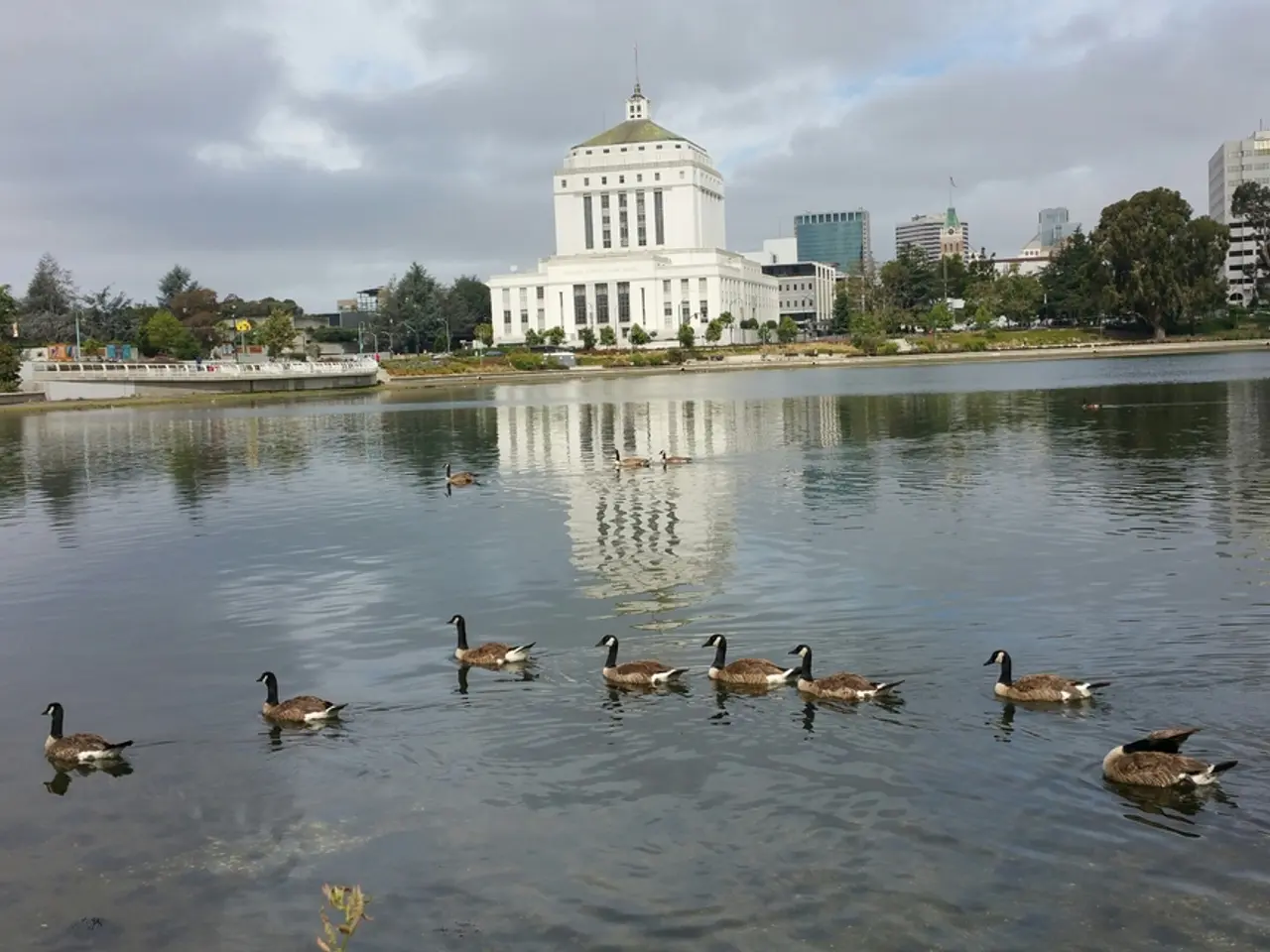Coastline of Louisiana Vanishing: Wetlands Capable of Creating Weather Conditions
Louisiana's wetlands, a vital part of the Gulf of Mexico's ecosystem, have been under threat for generations. These wetlands have been the lifeblood of families and communities, providing fisheries, cultural richness, and livelihoods for generations [1].
Unfortunately, human activities and natural forces have combined to cause the erosion of Louisiana's wetlands. The construction of levees along the Mississippi River has prevented natural flooding, depriving the wetlands of nutrient-rich sediment that historically built and maintained coastal wetlands [5]. Shipping channels and other infrastructure have also altered natural water flows and sediment distribution [1].
Additionally, human-induced sea level rise, driven by climate change, exacerbates wetland loss by increasing inundation and saltwater intrusion [1][4]. Natural forces, such as sea level rise and natural subsidence, also contribute to the erosion of the wetlands, making them more vulnerable to flooding and erosion [2].
The consequences of wetland loss in Louisiana are far-reaching. Wildlife impacts are significant, with the loss of wetlands reducing habitat area, threatening biodiversity, and disrupting fishery productivity [5]. Invasive species can further disrupt native ecosystems as wetlands degrade [1].
Cultural impacts are equally profound. Louisiana’s coastal communities, many with deep cultural and historical ties to the wetlands, face displacement and loss of livelihoods due to erosion and storm vulnerability [1][3].
Weather and storm protection are also at risk. Wetlands act as a natural buffer against hurricanes and storm surges, reducing storm surge height by up to a foot for every mile of wetlands. Their loss increases vulnerability to devastating hurricanes like Katrina, which caused large-scale loss of life and displacement [1][3][5]. Without wetlands, communities face greater flood risk and economic damage.
Restoration projects offer hope but require long-term commitment and scaling to counteract ongoing loss [2][5]. However, recent political decisions have stalled some large-scale projects, posing challenges to mitigation efforts [1][3].
The story of Louisiana's vanishing coastline is one of awe and heartbreak, urgency and possibility. The wetlands are not just a landscape but a lifeline, a weather-maker, and a symbol of the delicate balance between humanity and nature. As every foot of land is lost, culture and livelihoods are put at risk, and towns and cities face greater peril when storms come, as the wetlands once served as shields.
The future of Louisiana's wetlands is uncertain due to the ongoing threats of climate change, rising sea levels, and human development. It is a call to action for all to protect these vital ecosystems and the communities that rely on them.
References:
- National Wildlife Federation. (n.d.). Louisiana's Wetlands. Retrieved from https://www.nwf.org/Wildlife/Wildlife-Conservation/Coastal-Wetlands-Program/Louisiana-Wetlands
- Restore the Mississippi River Delta. (n.d.). Restore the Mississippi River Delta. Retrieved from https://www.nrdc.org/initiatives/restore-mississippi-river-delta
- The Nature Conservancy. (n.d.). Louisiana Coastal Wetlands. Retrieved from https://www.nature.org/en-us/get-involved/how-to-help/find-opportunities-to-get-involved/where-we-work/north-america/united-states/louisiana/louisiana-coastal-wetlands/
- U.S. Geological Survey. (n.d.). Coastal Wetlands. Retrieved from https://www.usgs.gov/centers/louisiana-water-science-center/science/coastal-wetlands
- National Park Service. (n.d.). Louisiana's Wetlands. Retrieved from https://www.nps.gov/laco/learn/nature/wetlands.htm
Insects play a crucial role in Louisiana's wetlands as they contribute to the decomposition of plants, effectively recycling nutrients back into the ecosystem [4].
The energy generated from the interplay between plants, insects, and wildlife in Louisiana's wetlands is essential, powering complex food webs and maintaining ecological balance [2].
Awareness of the environmental-science behind the impact of climate change on Louisiana's wetlands is key to fostering sustainable practices and minimizing further loss [3].
Protection and restoration of the wetlands are crucial for the preservation of wildlife, culture, weather patterns, and the overall resilience of the coastal communities against climate-change-driven threats [1].







